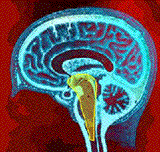
About 27% of all the patients reported not being aware of anything while they were unconscious. They remembered the last thing that happened to them before they became unconscious and then waking up. When they awoke, it was as if no time has passed. When individuals had head injuries, it was very common for them to lose all memory of events before the injury. For these individuals, the loss of anywhere from 1/2 an hour to 12 hours was common.
If patients remembered anything from this state, it was feeling fine and being in a dark place. For example, a young woman with diabetes became unconscious after her blood sugar became high while ill with a virus. She said the last thing she remembered was asking her boyfriend to call the doctor. The next thing she remembered was waking up with intravenous tubes in her. When asked if she had any feelings when she was unconscious, she said, "No, I was completely out of it."
One of the important aspects of this state was the patient's fear that someone may have done something to them when they were unconscious. This was particularly true if the patient was unconscious for longer than just a few hours. Also, if the patient did not have a caring person with him or her, there was more likely to be concern. Because they could not remember what happened, they felt very vulnerable. They often tried to fill in the time gap by asking questions of the nurses and doctors about what happened to them.
This unconscious experience is explained by our understanding of pathophysiology. We know that the reticular activating system (RAS) in the brainstem controls our ability to be awake, to sleep, and to pay attention. Integration of the cerebral cortex and the RAS enables us to be aware and knowledgeable about activities in our environment. Any injury to the brain, like head injuries, oxygen deprivation of the brain, certain drugs, and electrolyte changes can affect these centers and leave the person unconscious.
While all of the patients interviewed experienced physiological changes leading to unconsciousness, complete unconsciousness was recorded in only 27% of the patients. Almost 75% percent reported experiences that indicate some continued awareness of person, place or time.

The reticular activating system (RAS) is involved in most central nervous system activity, including control of wakefulness, sleep and part of our ability to direct attention toward specific areas of our conscious minds. The RAS is a primitive network of interlacing nerve cells and fibers that receives input from multiple sensory pathways. It extends from the spinal cord to the lower brain stem, upward through the mesencephalon and thalamus, and then is distributed throughout the cerebral cortex. RAS fibers affect the autonomic and motor systems. They integrate the regulation of cardiovascular, respiratory and motor response to external stimuli.
The RAS diffusely distributes incoming sensory stimulation throughout the CNS, upregulating and readying the system to respond more specifically to input. An example is the body's response to a loud noise. The noise is perceived initially as a shocking stimulus that heightens awareness in all the senses. Once upregulated the CNS begins to search for more data and coordinate information to locate and deal with the cause of the noise. Without a functioning RAS, the noise might remain as isolated and unrelated stimulation within various CNS structures.
©RnCeus.com